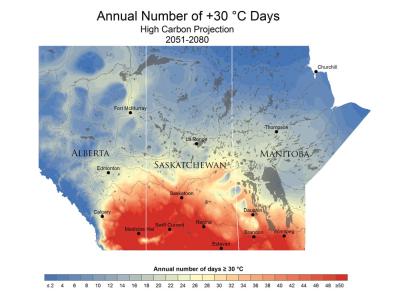Manitobans lean towards wanting all visitors from out-of-province - even those from nearby places with relatively few cases of COVID-19 - to self-isolate for 14 days if they decide to pay the province a visit.
Since June, visitors from northwestern Ontario, Saskatchewan, Alberta, B.C. and the three northern territories have been allowed to visit Manitoba without having to self-isolate when they arrive. Those coming from east of Ontario’s Lakehead region are required to keep to themselves for two weeks to prevent the spread of COVID-19. Manitoba is the only province outside Atlantic Canada that requires certain interprovincial visitors to self-isolate upon arrival.
Overall, fully one-third of Manitobans think visitors from anywhere outside Manitoba should be required to self-isolate for 14 days post-arrival. This sentiment is more likely to be shared among those who are very concerned about getting COVID-19, as well among Manitobans under the age of 55.
Nearly Three-Quarters Want Restrictions on Albertans, British Columbians Re-Imposed
Not surprisingly, there is a close link between views on self-isolation requirements and the total number of cases reported in each region/province. Nearly nine-in-ten Manitobans insist visitors from hard-hit southern Ontario and Quebec should be required to self-isolate when they arrive.
Nearly three-quarters believe visitors from B.C. and Alberta should be required to self-isolate – even though visitors from both provinces have been able to travel here freely for three months, and despite the fact B.C. has had fewer than half as many cases overall as Alberta. Nearly two-thirds, meanwhile, feel those from the four Atlantic provinces (New Brunswick, Nova Scotia, Prince Edward Island and Newfoundland and Labrador) should also be required to self-isolate if they come to Canada’s middle province.
Majorities Also Want Visitors From Saskatchewan, Northwestern Ontario To Self-Isolate
Manitobans are also more likely to believe our province’s closest neighbours should be required to self-isolate when arriving in Manitoba, with slightly more than one-half (55%) agreeing visitors from Saskatchewan should self-isolate and exactly 50 per cent agreeing someone coming from Kenora or Thunder Bay should have to stay away from others for two weeks once they cross the border. Interestingly, six-in-ten support a 14-day isolation rules for visitors from the rest of northern Ontario (which includes communities such as Sault. Ste. Marie, Timmins and Sudbury that have experienced – and continue to experience – virtually no resurgence of COVID-19).
Only those from the three northern territories (which have experienced a grand total of 20 cases to date) are more likely to be considered for an exemption to the 14-day rule. But even then, nearly one-half believe those from Nunavut, the Northwest Territories and the Yukon should be required to self-isolate, with four-in-ten believing visitors from Canada’s North should be exempt.
Key Takeaways:
These results show that as Manitoba experiences a spike in cases after several weeks of relatively low case counts, residents are supportive of provincial officials being more restrictive about who can enter the province without following the 14-day self-isolation standard.
Manitobans’ views on interprovincial restrictions also do not reflect the current reality of active case counts, as the province has gone from having virtually no active cases of COVID-19 in July to experiencing one of the highest rates of infection per 100,000 people in the country. Manitobans’ views appear to be driven largely by information on the total number of cases in each region. This may remain for some time, even as public health officials transition from emphasizing total COVID-19 case counts in their communications to measures to other, more relevant and up-to-date measures of COVID-19’s impact.
Disclosure Statement
Probe Research is a member of the Canadian Research Insights Council (CRIC) and confirms that this research fully complies with all CRIC Standards including the CRIC Public Opinion Research Standards and Disclosure Requirements. Learn more at: https://www.canadianresearchinsightscouncil.ca/standards/por/
Methodology
Between August 19th and 29th, 2020, Probe Research surveyed a representative sampling of 1,049 Manitoba adults. The sample was provided by Probe Research’s proprietary panel and supplemented by respondents from a national panel provider. An online survey is a sample of convenience, so no margin of error can be ascribed. However, a random and representative non-convenience sample of 1,049 Manitoba adults would have a margin of error of ± 3.0 percentage points, 19 times out of 20. The margin of error is higher within each of the survey’s population sub-groups. Minor statistical weighting has been applied to this sample to ensure that age and gender characteristics properly reflect known attributes of the province’s population. All data analysis was performed using SPSS statistical analysis software.



